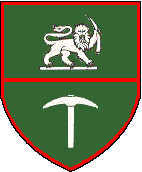|

| |
Defense/Protection of sensitive points
SECTION 1: INTRODUCTION
- Military forces will be required to undertake the defense/protection of
sensitive points. These may be considered vital points which, if damaged or
secured by the enemy, represent great disadvantage to the government
military forces and the population, i.e.:
- Installations with a political, administrative, economic and military
interest such as:
- Essential services, e.g.,, water, gas, electricity, etc.
- Fuel and industrial installations.
- Vital points of communication, e.g., bridges, tunnels, railways,
etc.
- Centers of population which must be protected from any contact with
the enemy.
- The protection of sensitive points is a tactical problem and will vary
according to the nature of the installation, location, probable enemy action
and the troops available for the task. Commanders must strike a balance
between the military need to retain mobile forces for offensive tasks and
the military or civilian requirement for security. A satisfactory and sound
solution will only be found by close cooperation and discussion with the
police and civil authorities.
- A list of sensitive points should, if possible, be drawn up by the local
government officials, military and police commanders to establish
priorities. The classification of sensitive points should be frequently
reviewed in relation to the situation and the consequent possible shift in emphasis. Some sensitive points may only be classified as such for limited
periods, e.g., railway siding during the unloading of ammunition.
SECTION 2: ORGANIZATION OF DEFENSE AND SECURITY
- General. This mission of a unit tasked with defending or protecting a
sensitive point would normally be to guarantee at any cost from terrorist
action, the installation, together with the people who serve it. In certain
cases this may not be possible and it will be necessary to accept that the defense
can only be undertaken for limited periods unless external reserves
are committed.
- Appreciation. In making his appreciation, the commander should consider
the following basic factors:
- The importance and nature of the sensitive point.
- The available force, including reserves, and their location in
relation to the sensitive point.
- The enemy threat.
- Plan. During his planning, the commander should bear in mind the normal
principles of defense. The following points will require particular
attention:
- Careful siting of weapons.
- Good fields of fire.
- Protection and concealment of fire positions.
- Efficient system of communications (internal and external).
- Control.
- Deception.
- Security.
- Reserve.
- Alarm scheme.
- Siting of weapons. Weapons should be carefully sited to ensure the best
use of their characteristics. Positions should be mutually supporting and
provide all-around defense and depth. Positions should be changed frequently
and, if possible, day and night positions should not be the same.
- Fields of fire. In certain circumstances it will be necessary to clear
fields of fire. Thick bush and other obstacles which make fire and
observation difficult should be cleared from the immediate vicinity of the
defended area.
- Protection and concealment. Fire positions should be concealed and
protection obtained by the best use of buildings suitably sand-bagged and
developed into strong points.
- Communications. All sub-units involved in the protection or defense of the
sensitive point should be linked with an efficient system of communication.
This should be duplicated. External communications are also essential.
- Control. This is achieved through:
- Good communications.
- Good observation. In certain circumstances it may be necessary to
build towers to achieve this.
- Deception. This may be achieved with alternative positions. However, when
the topography does not provide adequate concealment for alternative
positions and the deployment of the reserve, it may be necessary to dig
communication trenches.
- Security. In addition to the defense of a sensitive point, it will be
necessary to organize an efficient security system, thus:
- Reducing the chances of a surprise attack.
- Permitting adequate time for troops to occupy defensive/alarm
positions.
- Security of a sensitive point may be organized in the following manner:
- Internally.
- In close proximity.
- Internal security. This is obtained through:
- An efficient system of sentries.
- Night illumination.
- Obstacles.
- Alarm system.
- Identification system.
- An efficient system of sentries may be achieved through these points:
- Sentry posts should be sited so as to ensure all-around observation
with the minimum number of posts. If necessary, towers should be built
to achieve this.
- Sentry posts should frequently be changed and should, if possible, be
varied by night.
- At night, sentries should be doubled and simultaneous changing of
sentries should be avoided.
- War dogs could be used to increase the efficiency of sentries.
- Reserves should be located in relation to sentry posts for quick
reaction.
- The illumination of likely approaches should be planned and may include
conventional flares or the use of improvised means such as kerosene flare
drums or the lights of vehicles.
- Obstacles should be sited to cover likely enemy approaches. Wherever
possible, best use should be made of natural obstacles which may require
some improvement. Obstacles serve to prevent a successful quick attack, slow
down the enemy and enable casualties to be inflicted. Where observation is
more difficult, the obstacles should be supplemented with alarm devices,
e.g., anti-personnel mines, tins, electrified wires, etc.
- The alarm scheme should, where possible, provide warning of the approach
of the enemy without disclosing this fact, thus enabling the commander to
issue the necessary orders for deployment and to achieve maximum surprise.
However, should time not permit, a general alarm scheme should exist,
thereby enabling alarm positions to be occupied with the minimum of delay.
- An identification system is necessary to ensure the identity of:
- Patrols and detachments operating in close proximity to the sensitive
point.
- Civilian elements who may be required to enter the sensitive point for
their normal functions and activities.
- The password system of identification is generally used for military
personnel while, in the case of civilians, it is normal to issue permits, or
only permit entry at predetermined times and places, during which careful
screening is carried out.
- Close proximity security. This is the security of the immediate vicinity
of the sensitive point and is achieved by:
- Patrols.
- Observation posts.
- Ambushes, obstacles and booby traps covering likely approaches.
- Patrols have the task of extending the security of a sensitive point and
will be particularly useful when it is not possible to cover all approaches
by observation. Their patrol program should be irregular, in both time and
routes, to prevent being surprised. The use of dogs should also be
considered.
- Observation posts should be established to cover likely routes to the
sensitive point. In all cases these posts must be well concealed, well
protected and provided with radio communications.
- If considered necessary, it may be possible to establish ambushes,
obstacles, etc., to cover the most likely concealed approaches of the enemy.
- Important
aspects. When planning the defense and security of a sensitive point, the
following points should be borne in mind:
- The enemy will always aim to achieve surprise and may even attempt to
penetrate the inner security of the sensitive point before initiating
the attack.
- The enemy will always carry out a reconnaissance, in an attempt to
establish the layout of the defense, before attacking. Consequently,
fire discipline is essential and fire should only be opened when maximum
casualties are ensured. Vigorous patrolling by day will help to prevent
enemy reconnaissance.
- Counterattack plans should be made and any favorable situation should
be rapidly exploited.
- Frequent checks, especially before last light, should be made to
ensure the following are known:
- Arcs of fire and observation.
- Fire positions.
- Location of the commander.
- Location of adjoining sub-units.
- Action in the event of an alarm.
- Sentry duties.
- Time out and in of friendly force patrols.
- Weapons and equipment are available for immediate use.
- In certain cases it must be accepted that it is impossible to organize the
defense of a sensitive point in secrecy. On these occasions it may be
preferable to establish the defense openly, thus indicating our strength and
efficiency to the local population and possibly the enemy. Obviously,
detailed planning will not be disclosed, as security will be vital to the defense
of the installation.
|




